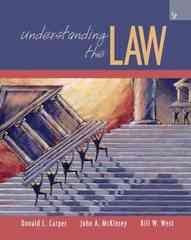Question
Suppose that an individual lives for two periods and her utility in each period is given by u(ct , lt ) = 12 ln(ct )
Suppose that an individual lives for two periods and her utility in each period is given by u(ct , lt ) = 12 ln(ct ) + 12 ln(lt ). The individual (as per usual) has 16 hours of time to devote to leisure or work in each period. The individual gets a wage of $10 in period 1. The interest rate in this economy is 0%. There is no non-labour income or borrowing constraints.
(a) What would be the hours worked by the individual in periods 1 and 2 the individual gets a $10 raise in period 2 (and so period 2 wage becomes $20) and she anticipates that raise?
(a) What would be the hours worked by the individual in periods 1 and 2 the individual gets a $10 raise in period 2 and does not anticipate that raise (she expects to only earn $10/hour)?
Step by Step Solution
There are 3 Steps involved in it
Step: 1

Get Instant Access to Expert-Tailored Solutions
See step-by-step solutions with expert insights and AI powered tools for academic success
Step: 2

Step: 3

Ace Your Homework with AI
Get the answers you need in no time with our AI-driven, step-by-step assistance
Get Started


